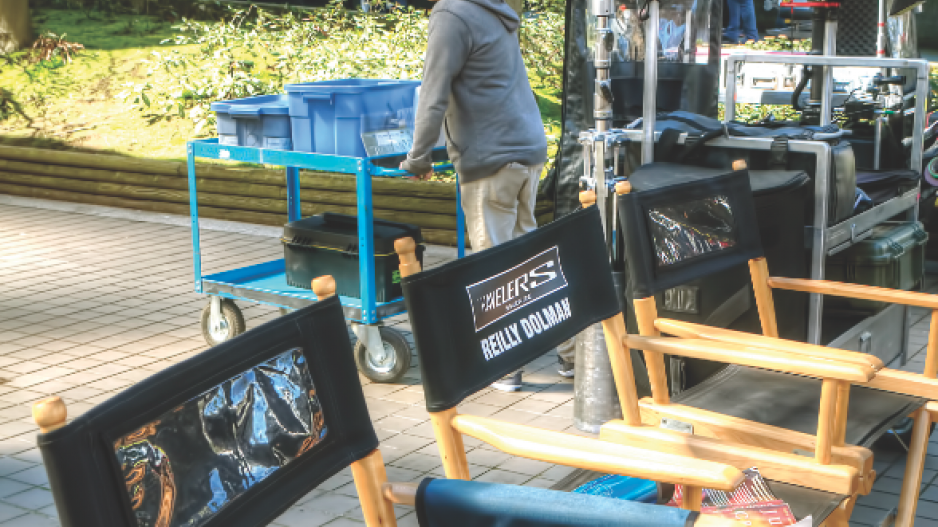Line producer Mary Anne Waterhouse was overseeing the nitty gritty of recent TV series when she asked a vendor about using compostable containers rather than the plastic ones so often serving as the default on sets.
“Initially, it seemed more expensive,” she said, regarding her own assumptions about buying containers with a lower carbon footprint.
“I went and said … I’m prepared to pay the extra for the compostable [containers] and the vendor said, ‘Oh, they’re half the price — like, literally half the price.’”
The moment stuck with Waterhouse, a producer with Peacock Alley Entertainment who has worked on series such as Netflix.com Inc.’s (Nasdaq:NFLX) Tiny Pretty Things.
It got her thinking: “Let’s stop being scared that it’s going to cost us more and start to look at the things that don’t — because they’re all around us.”
She was among dozens of experts speaking virtually this week at the Sustainable Production Forum, facilitated by Vancouver-based consultancy Green Spark Group, offering insights into transforming the film industry into a more environmentally conscious component of the economy.
B.C.’s film sector was worth $2.8 billion to the provincial economy in the 2019-20 fiscal year, according to a May report from the Canadian Media Producers Association.
And while the industry plays a significant part of the economy, it also takes a significant toll on the environment.
A 2020 report from Arup Group and other stakeholders, A Screen New Deal, calculated emissions for a tent-pole film production generates 2,840 tonnes of CO2 on average.
Throughout the week of panels at the forum, the environmental cost of the industry’s reliance on trucks and cars — known for their significant CO2 emissions — remained a constant thread.
Louise Pollard, a sustainability manager working with long-running Canadian TV series Murdoch Mysteries, said producers have struggled with efforts to accelerate the adoption of electric vehicles.
Productions rely on fleets provided by vendors and rental car agencies to meet their transportation demands as on-location shooting takes crews away from studios.
“I’ve reached out to some rental companies on a corporate level and they just cannot guarantee it,” she said Friday during the same panel as Waterhouse’s.
Waterhouse echoed those sentiments, adding there is simply not enough supply from manufacturers to meet industry demand.
The B.C. government unveiled new goals this week for accelerating the adoption of zero-emissions vehicles (ZEV), requiring 26% of all new vehicles sold in B.C. to be ZEV (electric or hydrogen fuel cell) by 2026, 90% by 2030 and 100% by 2035.
And earlier this week, car rental giant Hertz Corp. revealed it inked a deal for 100,000 electric vehicles (EV) from Tesla Inc. (Nasdaq:TSLA) — the largest order in the EV-maker’s history.
“That forces all the other car companies to start renting electric vehicles or buying them,” SunCountry Innovations Inc. CEO Kent Rathwell, who specializes in EV infrastructure, said at an earlier Friday panel.
“They have to move now [to purchase] otherwise there won't be enough electric vehicles — they’re just too efficient and economically wise.”
Story continues below photo ...

It’s not only EVs paving the way for the film industry’s efforts to reduce carbon emissions.
Sai Frame, a location portfolio manager for Vancouver-based Location Fixer Productions Ltd., praised municipal efforts that have provided film and TV crews access to power kiosks or power “tie-ins” to avoid the use of diesel generators.
Instead, power-sucking lighting equipment and large trucks needed for location shoots can tap into cleaner power sources, such as at the Vancouver Art Gallery where eight such plug-in power kiosks have been set up.
“If you think about that, we were shooting 35 TV shows, all averaging three days [at the art gallery] every year,” Frame said during Friday’s panel with Waterhouse and Pollard.
“We’re talking thousands of generator days that were in use where diesel was just being burnt and now we’re not doing any of it.”
Meanwhile, Rathwell said governments must be persistent offering incentives to ensure the rapid adoption of EVs.
“One of the fastest ways for governments to do things is just to sort of mandate it and then let everyone else figure out how to hit those targets,” he said.
—With a file from Nelson Bennett




